Hidden gems in Florence: Unique things to do in this artful city
Embarking on a journey through Florence is like stepping into a living masterpiece, with its renowned art, architecture, and history on full display. But Florence is one of the most visited cities in Italy, and many paths are well-trodden. Beyond the iconic landmarks, Florence harbours a wealth of hidden gems waiting to be discovered. Here are some of my favourite unique things to do in Florence — the tucked-away corners, the unassuming facades, and the secret treasures that add an extra layer to Florence’s magic. From lesser-known museums to unassuming restaurants and hidden shops, these are my favourite places that are off the beaten path in Florence.
Bargello National Museum
I almost skipped the Bargello Museum, but what a find! This place is a sculpture and decorative arts haven. Donatello's David steals the show, but the museum is a treasure trove with marble sculptures, ceramic roundels, and stunning Islamic tiles. The atmosphere is generally serene, and the museum spaces themselves are a visual treat. The open courtyard is filled with sculptures, and each room of the museum has a different sort of collection, from ceramics to armour. It is quieter than other museums in Florence, but is still a major collection, and very near the centre.
Bardini Gardens
The Bardini Gardens are a historical gem with roots dating back to the 13th century when they were initially designed for the Mozzi family. Fast forward to the 18th century, and the Bardini family revamped and expanded these beautiful grounds. What sets them apart? The killer panoramic views of Florence – Ponte Vecchio, Palazzo Vecchio, and the Duomo all in one breathtaking sight. Beyond the greenery, the gardens double as an outdoor art gallery. You'll stumble upon sculptures by artists like Giambologna, adding an extra cultural touch to your stroll through this historic oasis. If you’re there in the spring, you can’t miss the incredible wisteria tunnel.
Where to stay in Florence
Here are my picks of hotels with a charming or authentic vibe. In order of increasing price range.
Hotel Cestelli - (pictured) This super basic yet authentically Italian guesthouse is where I stay when I visit Florence solo. Super budget friendly and around the corner from Palazzo Strozzi.
Relais Cavalcanti Guest House - gorgeous, dreamy, central
Corte dei Neri Residenza d'Epoca - beautiful and antique
Oltrarno Spendide - glamourous mix of old and new
Room Mate Luca - that chic, modern Italian vibe
Park Palace Hotel - Tuscan villa with a pool
Four Seasons Hotel Firenze - just for fun, to have a look and dream
Basilica of Santo Spirito
The Basilica of Santo Spirito, the main church in my favourite area of Florence, stands as a testament to the architectural genius of Filippo Brunelleschi. Designed in 1444, the basilica showcases Brunelleschi's distinctive touch, characterised by harmonious proportions and geometric precision. Santo Spirito serves as a haven for artistic treasures from the Renaissance era. Inside, the sacristy holds Michelangelo's crucifix, elevating the basilica to a revered status. The vibrant piazza that the church is set in is another major draw. Home to regular markets and bustling bars and restaurants, Santo Spirito is one of the most lively and authentic Florence neighbourhoods.
Brac
Brac is a really charming cafe/bookstore/restaurant not far from the Uffizi Gallery. It has a beautiful installation of colourful paper strips from the ceiling which make it quite a striking place to stop and have a peek. It’s a great place to eat for vegetarians and vegans, and necessary to book ahead. They have a seasonal menu and a plate with three dishes so that you can try a variety.
Caffè Lietta
Cafe Lietta, way up in Piazza della Libertà, is the go-to spot for piruli—adorable shortbread tarts filled with custard or an array of delicious fillings. Renowned for their budini di riso, a unique rice pudding tart, this café has become a Florentine dessert haven.
Don't miss the chance to relax on their terrace beneath the portico, offering a perfect setting to indulge in these renowned treats. A visit to Cafe Lietta guarantees not just a delightful experience of Florentine desserts but also a moment to soak in the relaxed atmosphere of the terrace.
Church and Museum of Orsanmichele
Orsanmichele is highly historically significant, yet seems to be a place that most visitors to Florence don’t see. Even more, Orsanmichele offers an elevated viewpoint from the tower with amazing views over the Duomo and the rest of Florence — making it one of the most hidden gems for Florence views.
Orsanmichele traces its roots back to the 8th century when it functioned as an oratory dedicated to San Michele. Originally a hub of commerce, the building underwent a fascinating transformation over the years, evolving from a commercial space into a sanctuary where miracles were attributed to an image of the Virgin Mary. This shift marked the beginning of its dual role, serving both civic and religious functions.
Visitors to Orsanmichele must buy a ticket in advance at the kiosk, and then turn up at the appointed time in a small group of about 30. The first part of visiting Orsanmichele consists of entering the church, with seemingly ancient ceiling frescoes. After this, we were taken up several flights of stairs to enter the tower, which holds a collection of sculptures by Donatello and Ghiberti. It is possible to climb even higher, and to have a peek at the view over Florence from here.
While I found the museum interesting from a historical perspective, I really felt that I had discovered something special when I got to see the city from above with the golden sunlight slanting through the gothic windows. It was special.
Da' Vinattieri
Home to the best sandwich I’ve ever eaten, Da’Vinattieri is a tiny sandwich shop I will not shut up about to anyone I know visiting Florence. It is in a side street very near to the Duomo, and doles out lampredotto (which I have still not been brave enough to try) and schiacciata (like a Florentine focaccia sandwich). My sandwich if choice is the number 5, which is a simple combination of ricotta, soppresotta and orange. My goodness.
Museo Marino Marini Firenze
Florence is famous for its Renaissance art, but not so much the modern stuff. The Museo Marino Marini in Florence is a dedicated space showcasing the prolific works of Italian sculptor Marino Marini (1901–1980). Focused on modern and expressive sculptures, the museum provides a comprehensive overview of Marini's artistic evolution, featuring an array of sculptures, drawings, and paintings. Notably, Marini's recurring exploration of the equestrian theme takes centre stage. Housed within the historic church of San Pancrazio, the museum's setting adds an additional layer of intrigue, creating a dynamic intersection between contemporary art and Florence's rich cultural backdrop.
Fotoautomatica booths
In Florence, the Fotoautomatica booths offer a charming throwback experience, combining modern convenience with a touch of nostalgia. Scattered throughout the city, these vintage-inspired photo booths capture the essence of the moment in a series of candid snapshots. Embracing the retro aesthetic, these are hidden gems that still function and provide a wonderful souvenir. If you search ‘fotoautomatica’ on Google Maps, you’ll see the locations come up—there are several around the city.
Ginori 1735 Firenze Flagship
Situated on Via de Rodinelli, Ginori 1735's flagship store is right in the hub of designer shops in central Florence. Specialising in exquisite ceramics and tableware adorned with stunning designs, Ginori 1735's shop is a visual treat in terms of interior design. The staff, known for their friendliness, welcomed my photo-taking endeavors. Honestly, if my budget allowed, I'd probably buy everything in there. A standout is their recent collaboration with artist Luke Edward Hall, which adds an extra layer of artistic flair to their already impressive collection.
Speaking of beautiful place in Florence, find the loveliest boutique hotels in Florence here.
Giardino dell'Iris
The Giardino dell'Iris is a captivating botanical treasure dedicated to irises. Established in the 1950s through an international competition for new iris varieties, this garden has evolved into a perennial celebration of these vibrant blooms. Each year, the "Iris Bloom" festival attracts visitors worldwide to witness the kaleidoscope of colors. Situated below Piazzale Michelangelo, the garden not only showcases rare iris species but also provides a serene escape with its terraced layout and scenic views of Florence's iconic skyline. It’s only open a few weeks per year in early May, so I have never been able to visit—but it is on my bucket list.
Giardino dell'Orticoltura
The Giardino dell'Orticoltura in Florence stands out for its diverse collection of plants, ranging from local to exotic species, making it a go-to spot for plant enthusiasts. Dating back to the mid-19th century, this garden has a rich history, starting as an experimental garden for a horticultural society and later evolving into a public space with a commitment to botanical education. Beyond its greenery, the Giardino dell'Orticoltura has become a cultural hotspot, hosting various events and exhibitions. It's not just a garden; it's a vibrant intersection of nature and culture, and a cool place for locals to hang out. During summer evenings, it offers a great viewpoint to enjoy the sunset and good vibes with outdoor bars.
Hospital of the Innocents
The Hospital of the Innocents holds a significant place in the city's history and architectural heritage. Founded in the early 15th century by the silk guild Arte della Seta, the institution, designed by the esteemed Filippo Brunelleschi, functioned as both an orphanage and a foundling hospital. Its purpose was to care for abandoned infants, who were often left at the institution through a unique rotating wheel. The architectural brilliance of Brunelleschi is evident in the building's classical proportions, showcasing a Renaissance masterpiece. Beyond its structural significance, the Hospital of the Innocents is adorned with a captivating collection of Renaissance art, including works by Domenico Ghirlandaio and Andrea della Robbia. The latter's terracotta medallions further enhance the building's artistic allure. Today, this historic institution stands as both a museum and cultural center, preserving the legacy of Florence's rich cultural and architectural heritage.
Il Conventino
Il Conventino is a well-loved community space and cafe in Oltarno. It’s a beautiful space which once was a convent, and is the perfect spot for a casual lunch. It’s slightly out of the way, making it all the more a hidden gem, and a place locals love to visit. You might even get lucky and find a flea market on when you visit. They are known to serve delicious pizzas at reasonable prices.
Laurentian Library
Michelangelo's masterpiece, the Laurentian Library, is celebrated for its precise mathematical proportions. Remarkably, this architectural gem designed by Michelangelo continues to serve its purpose today. Situated within the San Lorenzo church complex, a visit to the library provides a unique glimpse into both art and history. Moreover, adjacent to it are the Medici Chapels, creating a comprehensive experience for those exploring the rich cultural heritage of Florence.
Mercato di Sant’Ambrogio and Mercato delle Pulci
The Mercato di Sant'Ambrogio is a local gem, offering an authentic glimpse into the city's daily life. This bustling market caters predominantly to residents, making it a vibrant hub of activity. Here, you'll find a colorful array of fresh produce, from seasonal fruits and vegetables to high-quality cheeses and meats.
But it’s the bit behind the food market which is the real hidden gem. In a more modern market, there are dozens of antique and flea market stalls selling incredible gems that you wouldn’t find anywhere else in the city. This is the Mercato delle Pulci. I had so much fun wandering this area and wished I had more room in my suitcase to take home some treasures.
Museo di Palazzo Davanzati
Palazzo Davanzati, a nobleman's residence dating back to the mid-14th century, serves a unique purpose as a house museum. Standing apart from the traditional art museums in Florence, it offers a genuine glimpse into the lifestyle of upper-class Florentines during its time.
What sets this museum apart is its focus on portraying real-life scenarios rather than artistic masterpieces. As you wander through the rooms, you can almost feel the echoes of the past, gaining insight into the daily lives of the city's elite. It's a departure from the typical art-centric experience, providing a more intimate and personal connection with history.
Having just read a novel about Florence in Renaissance times, I felt like the house was helping me to step back in time and imagine the reality of life for Florentine nobility.
For those who like me are intrigued by textiles, the top floor boasts a remarkable lace and embroidery collection, showcasing numerous examples spanning Florence's rich history.
Museo Stibbert
The Museo Stibbert in Florence is a unique cultural gem, home to an extensive and eclectic collection assembled by Frederick Stibbert, an English collector and resident of the city. Housed in Stibbert's former residence, the museum showcases a diverse array of artifacts, including armor, weapons, costumes, and art from various cultures and historical periods. One of its standout features is the impressive collection of European, Islamic, and Japanese armors, providing visitors with a fascinating glimpse into the history of warfare and craftsmanship. The museum's setting, with its opulent rooms and lush gardens, enhances the overall experience, offering a captivating journey through time and diverse cultures within the confines of this private collector's legacy.
It’s located a bit out of the city centre, but still isn’t difficult to get to via bus or taxi and is not too far from the Horticultural Gardens.
Officina Profumo - Farmaceutica di Santa Maria Novella
The flagship store of Santa Maria Novella perfumes resides within a beautifully preserved 13th-century building, once a humble pharmacy now transformed into an extraordinary space.
The understated opulence of the space is emphasized by antique furnishings, carefully arranged glass cabinets, and artisanal hand-carved wooden panels, subtly weaving a narrative that invites exploration into the fascinating history of Italian perfumery and pharmacy.
This is certainly one of the most incredible shops in Florence, and is tucked away near Santa Maria Novella Station, on Via della Scala, making it a hidden gem outside of the centre of Florence. It is becoming more popular to visit now, but I definitely missed it on my first few trips to Florence. It really is a delight, and there is so much to explore and smell there.
Osteria Santo Spirito
This is my favourite restaurant in Florence. First off, anything in Santo Spirito is bound to count as a ‘hidden gem’ in the sense that it will be less busy and more authentic than places directly in the centre of Florence. Secondly, this Osteria has some of the most delicious pasta dishes I’ve ever tried. It does get busy, so get there early to queue for a table. In good weather, the tables on the square (looking over towards the Basilica de Santo Spirito) will be filled with patrons and is a lively place to enjoy an al fresco lunch.
Palazzo Strozzi
Palazzo Strozzi, once a Renaissance palace, is now a modern art gallery. When I visited, it featured an exhibition by Olafur Eliasson, bringing a contemporary vibe to Florence's classic Renaissance setting.
The contrast between the modern artwork and the historic surroundings is like a breath of fresh air. The inner courtyard, open to everyone, often hosts interesting installations, creating a lively space in the heart of the city.
Palazzo Strozzi's switch to a contemporary art gallery adds a new flavor to Florence's cultural scene. It's a cool place to explore, offering a simple yet captivating mix of old and new. If you're in Florence, checking out this gallery can be a refreshing and unique experience.
San Marco Museum
The San Marco Museum is another one which may not count as a ‘hidden gem’ for those well versed with Florence’s museums and history. But this museum might be my favourite place in the world — I had such a powerful experience here that I can’t sing its praises enough, and I think it should be on everyone’s Florence list. The area around the San Marco Museum is also full of exciting things to see.
The museum houses remarkable frescoes and tempera paintings dating from the 15th to the 16th centuries. Renowned for Fra Angelico's Annunciation fresco, the museum also showcases numerous other exceptional works by the artist, known as Beato Angelico in Italy.
The convent features a small gallery displaying altarpieces and freestanding works by Beato Angelico. Examining the details up close reveals the modernity in his work, from naturalistic angelic faces to the varied texture of gold leaf and marble tiles, which to me seemed to resemble miniature Monet paintings!
Fra Angelico's poignant Annunciation is housed on the upper level, in the area where the monks lived. Each cell then contains a small fresco of different scenes from Christ’s life. To stand in the doorways of these tiny rooms and imagine what it would be like to live in close quarters with these devotional paintings was incredible. San Marco provides a quiet, reflective art experience, so different to the bustling Uffizi. Don’t miss it — even if you’re only spending one day in Florence.
Museo Novocento
The Museo Novecento in Florence is a captivating museum dedicated to Italian art from the 20th century. Situated within the historical setting of the Palazzo dell'Arengario, the museum houses a diverse collection that spans various artistic movements and styles of the 1900s. Visitors can explore an impressive array of paintings, sculptures, and installations by influential Italian artists, gaining insight into the cultural and social shifts that shaped the nation during this dynamic century. The museum's curated exhibits provide a nuanced journey through Italian modern and contemporary art, making Museo Novecento an essential destination for those seeking a comprehensive exploration of the country's artistic evolution in the 20th century.
S. Forno
Last, but not least, S. Forno is my favourite cafe and bakery in Florence. It is in Santo Spirito and serves up incredible bakes in a simple but beautiful white shop. As I am obsessed with budini di riso, that is what I always get, but there’s a lot of goodies to choose from, plus other deli goods. It’s a great hidden spot to head to for breakfast or lunch, and I returned day after day on my most recent visit to Florence.
Final thoughts on Florence’s hidden gems
When I first visited Florence, I made sure to see all the main spots — the Uffizi, the Duomo, Piazzale Michelangelo. And I enjoyed it, but I didn’t truly feel the magic of Florence. The next time I visited, I made a point of seeing the smaller museums, more local restaurants, and tucked away streets that I had missed before. Now I think of Florence as one of the most vibrant and special cities in the world. There’s so much to discover in Florence off the beaten path — be sure to visit some of these hidden gems on your next visit and you will find that magic too.

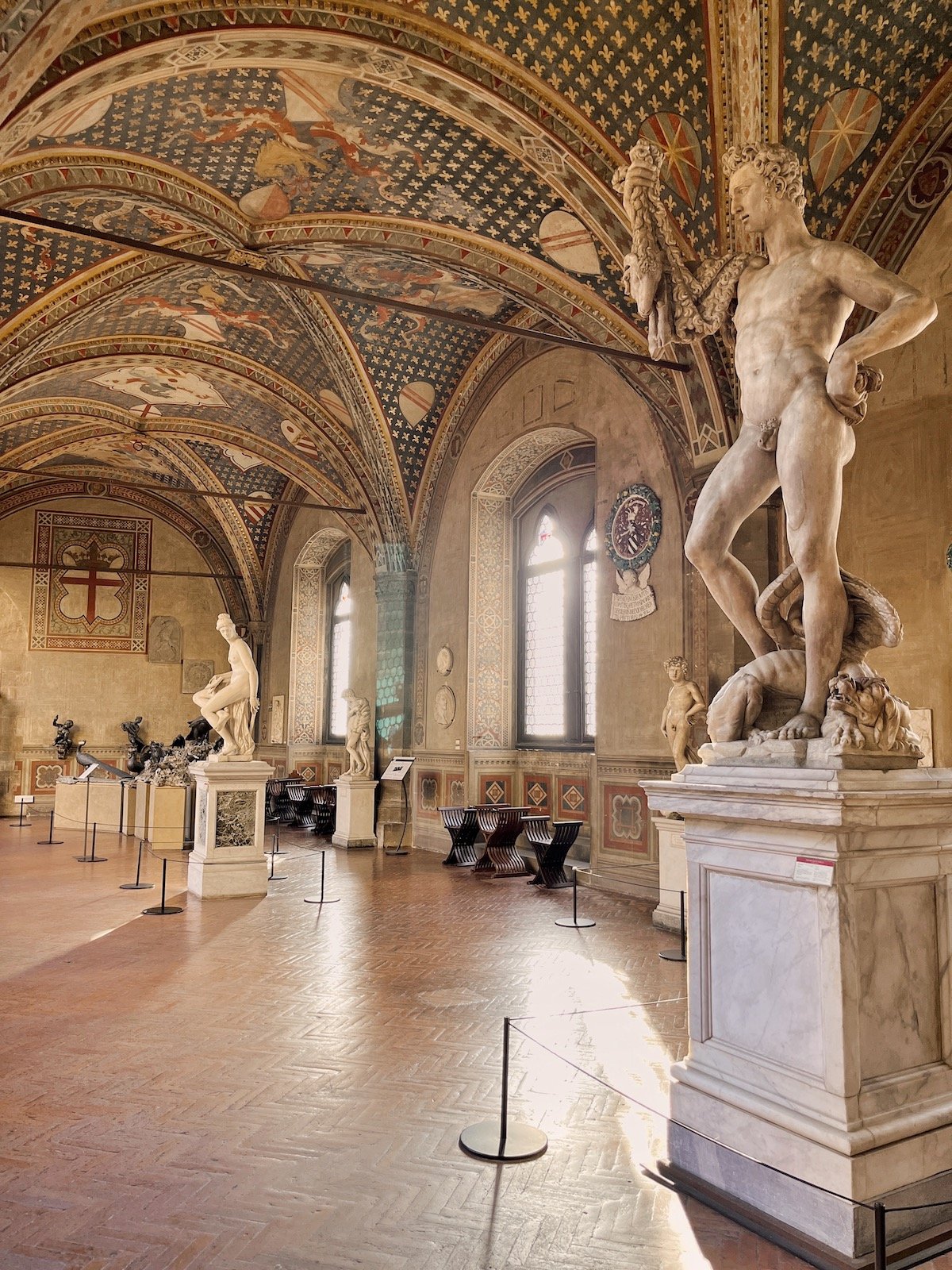
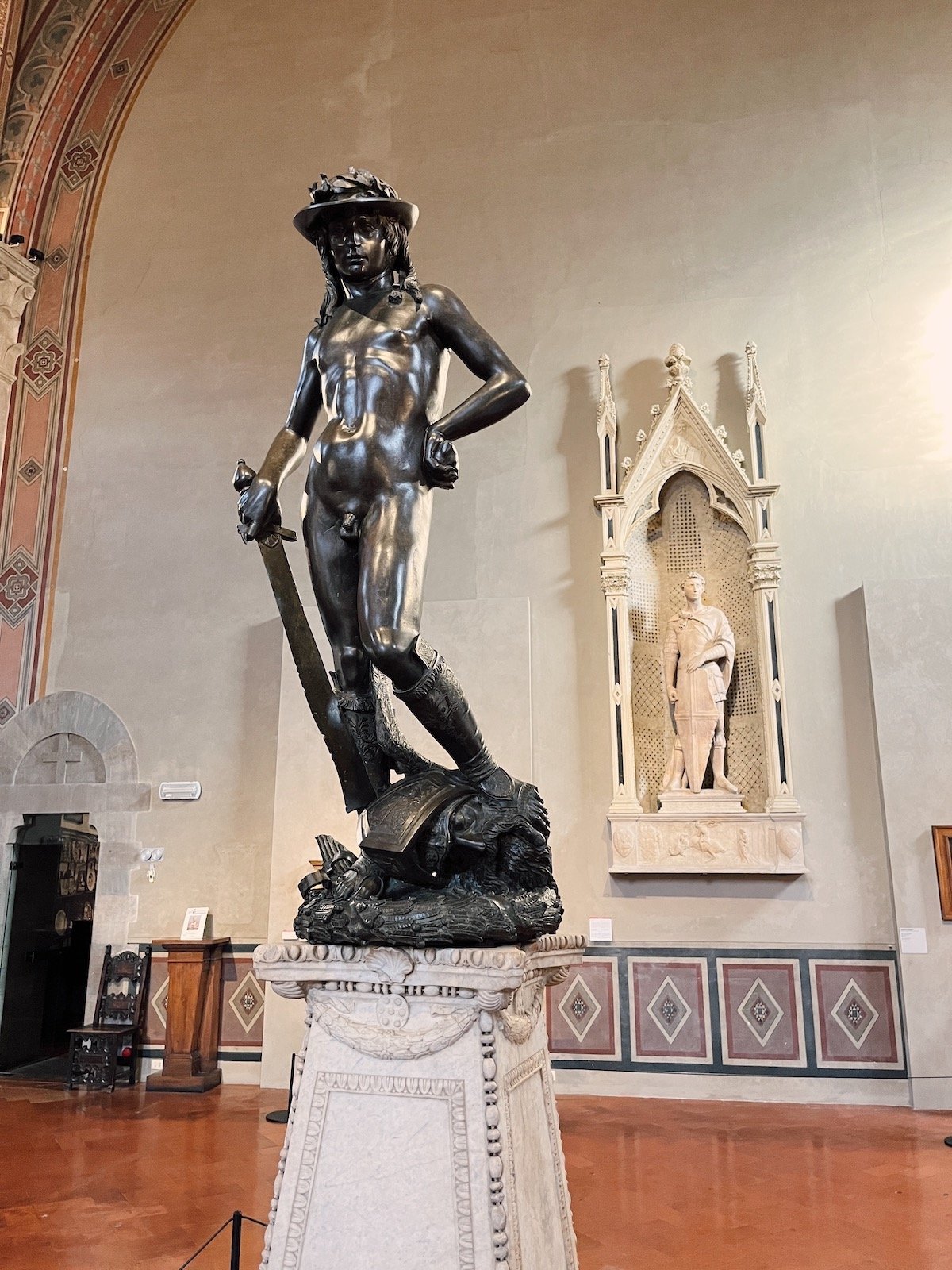



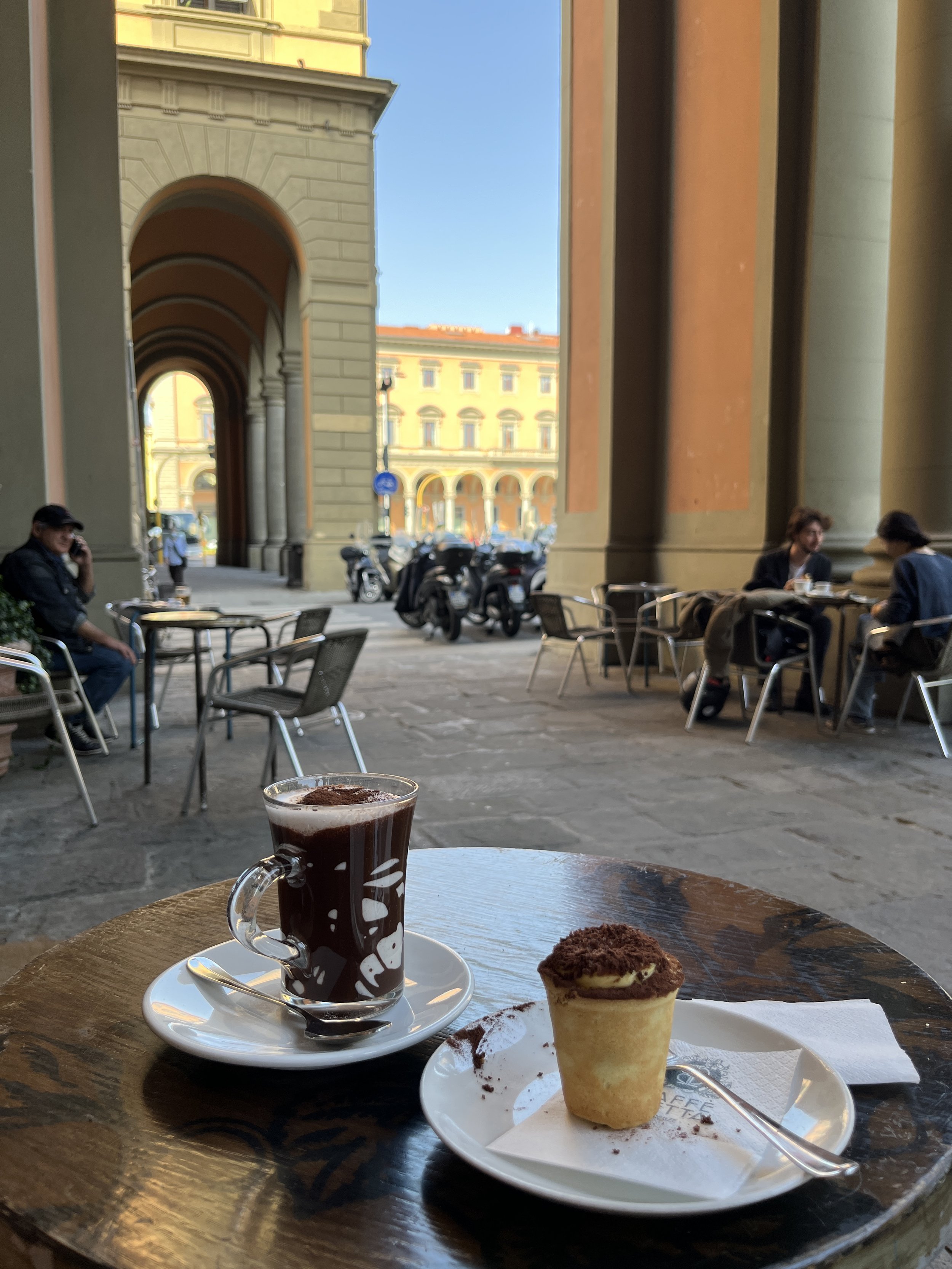
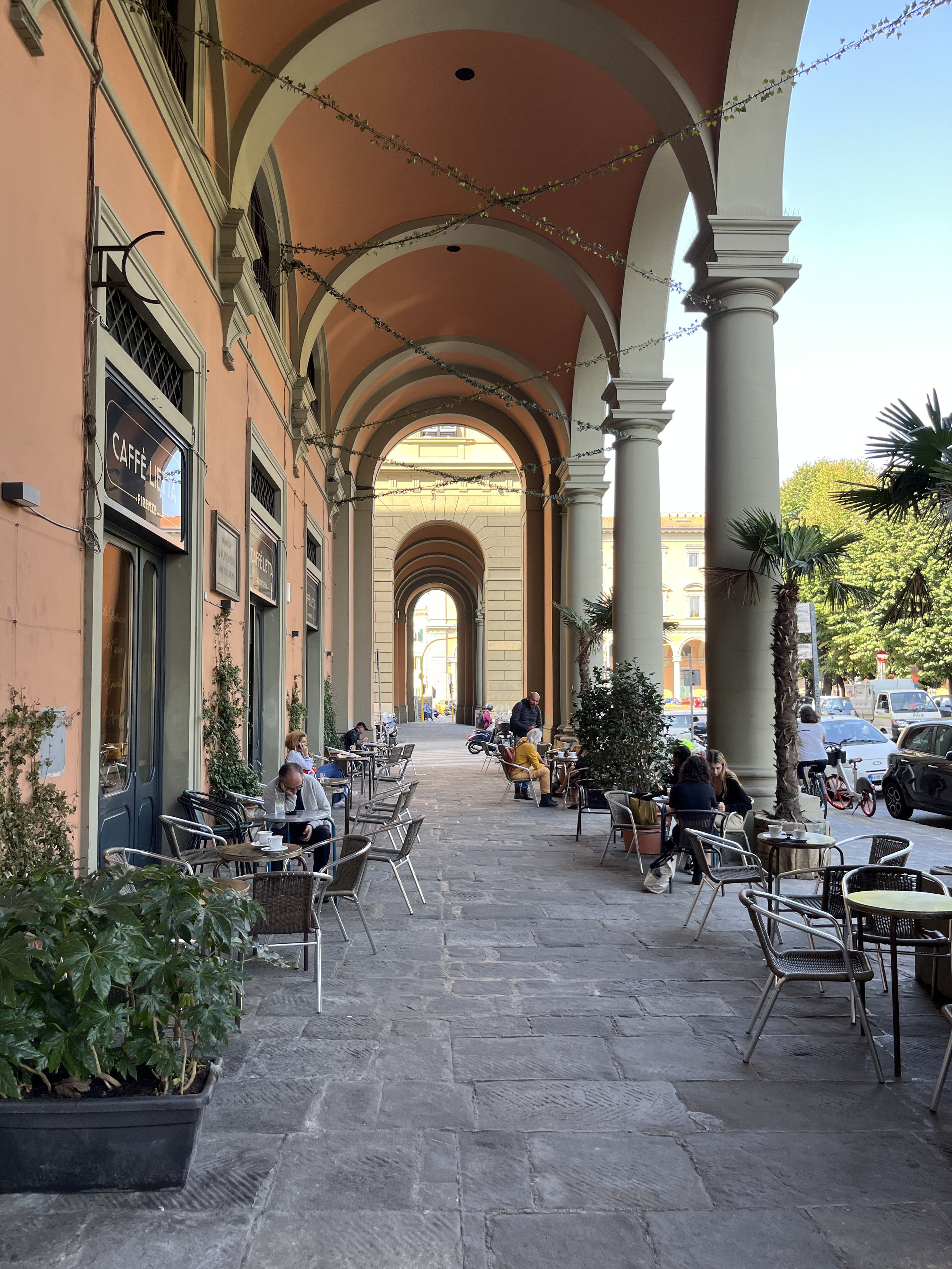
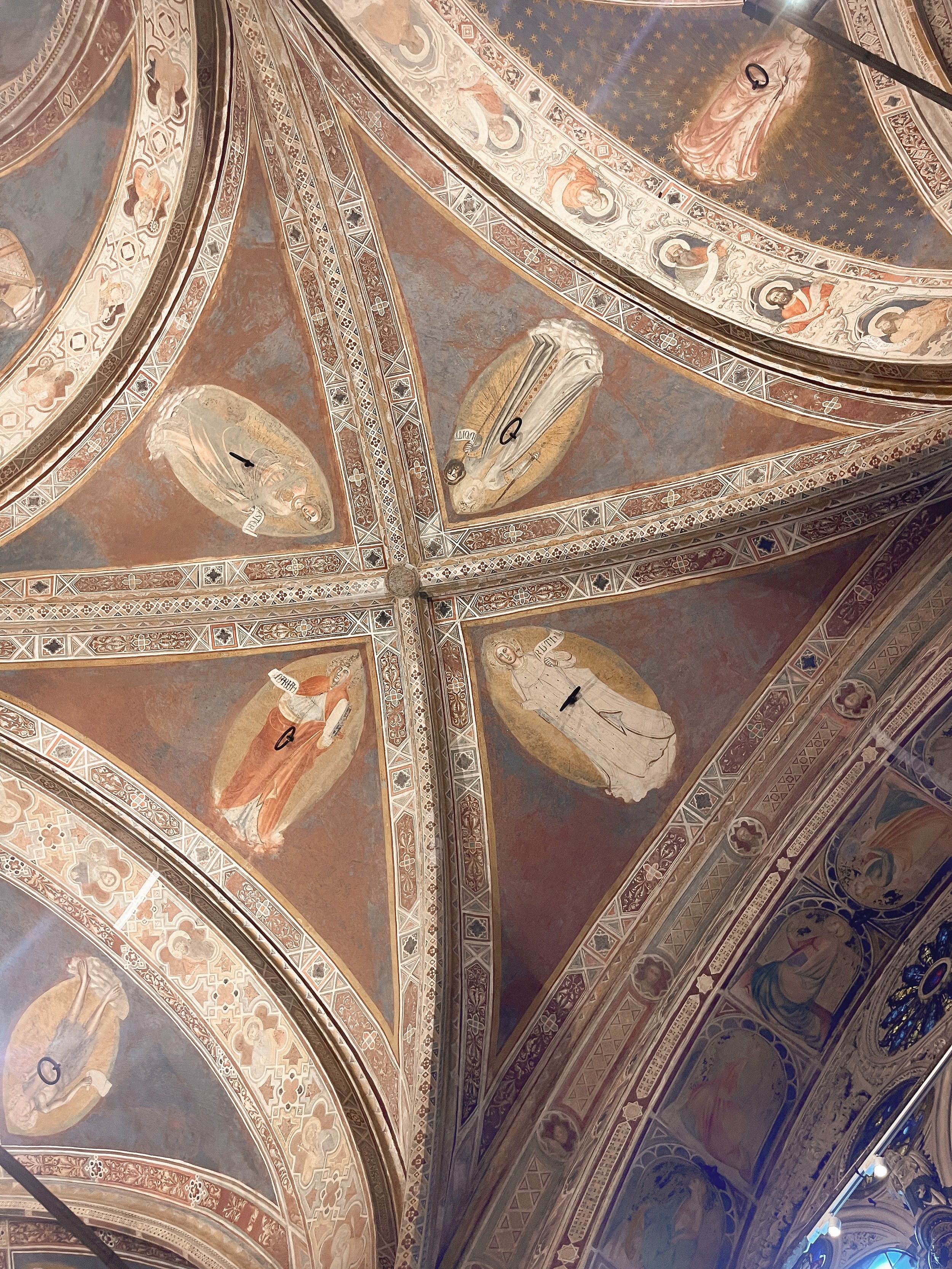
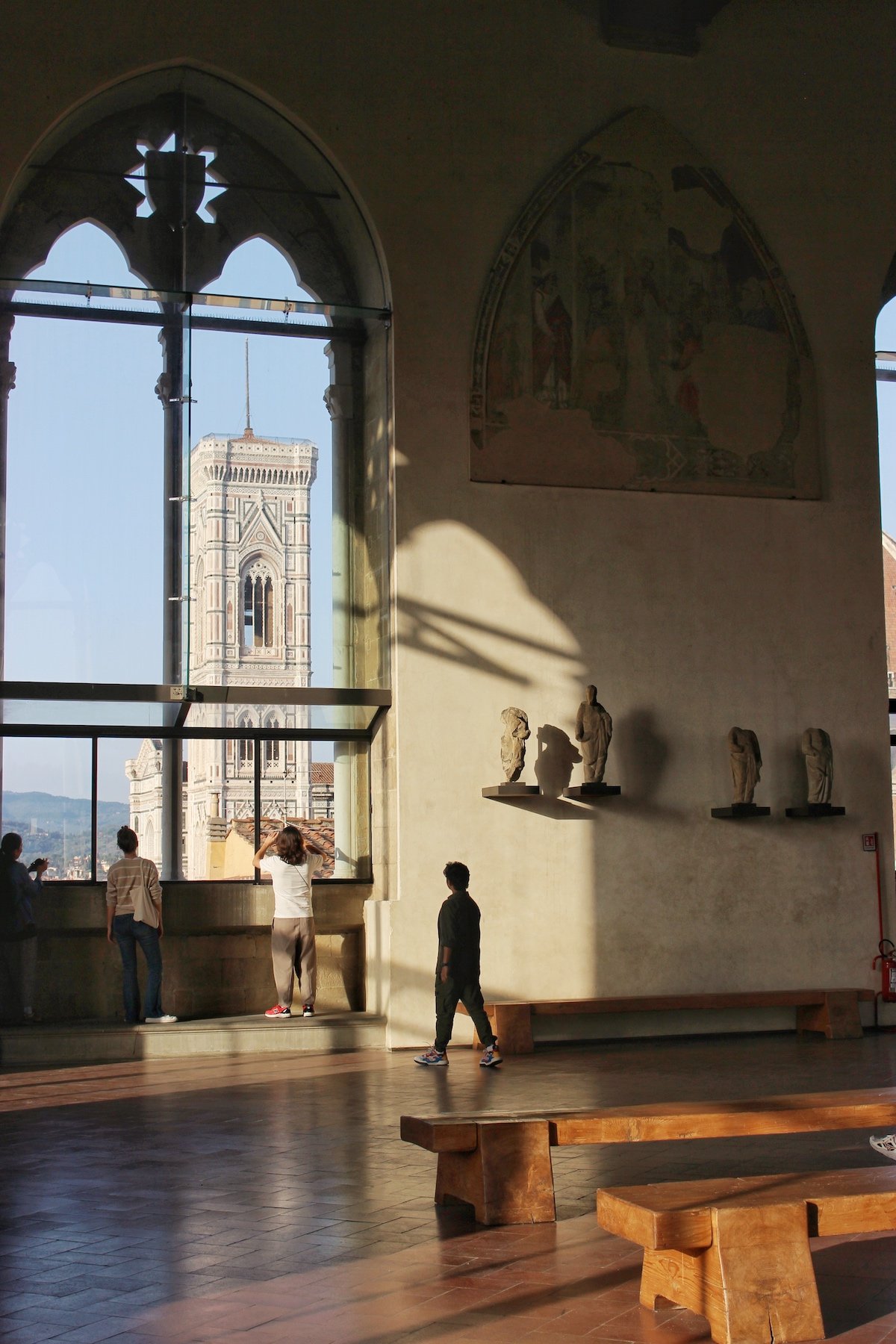
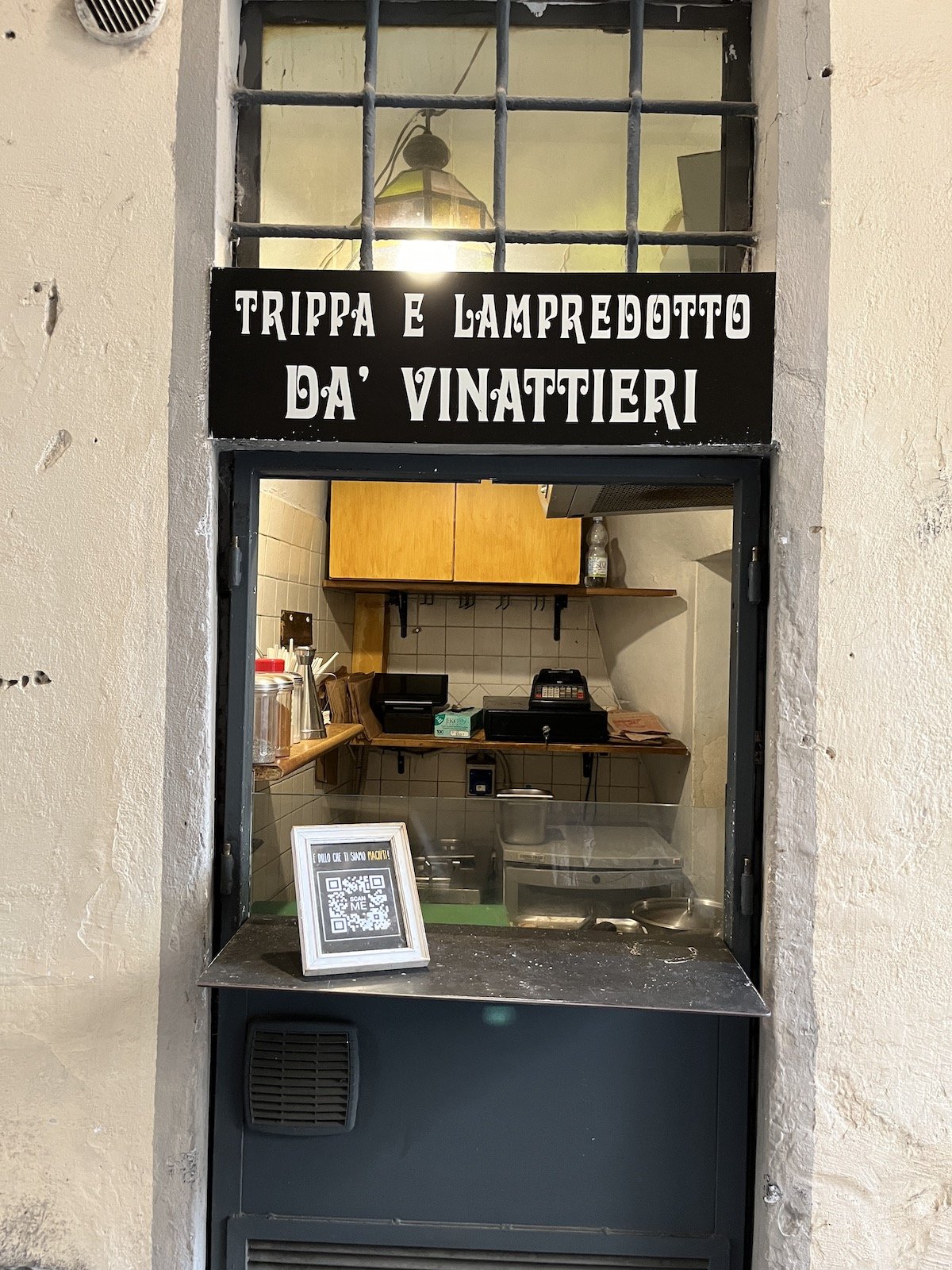
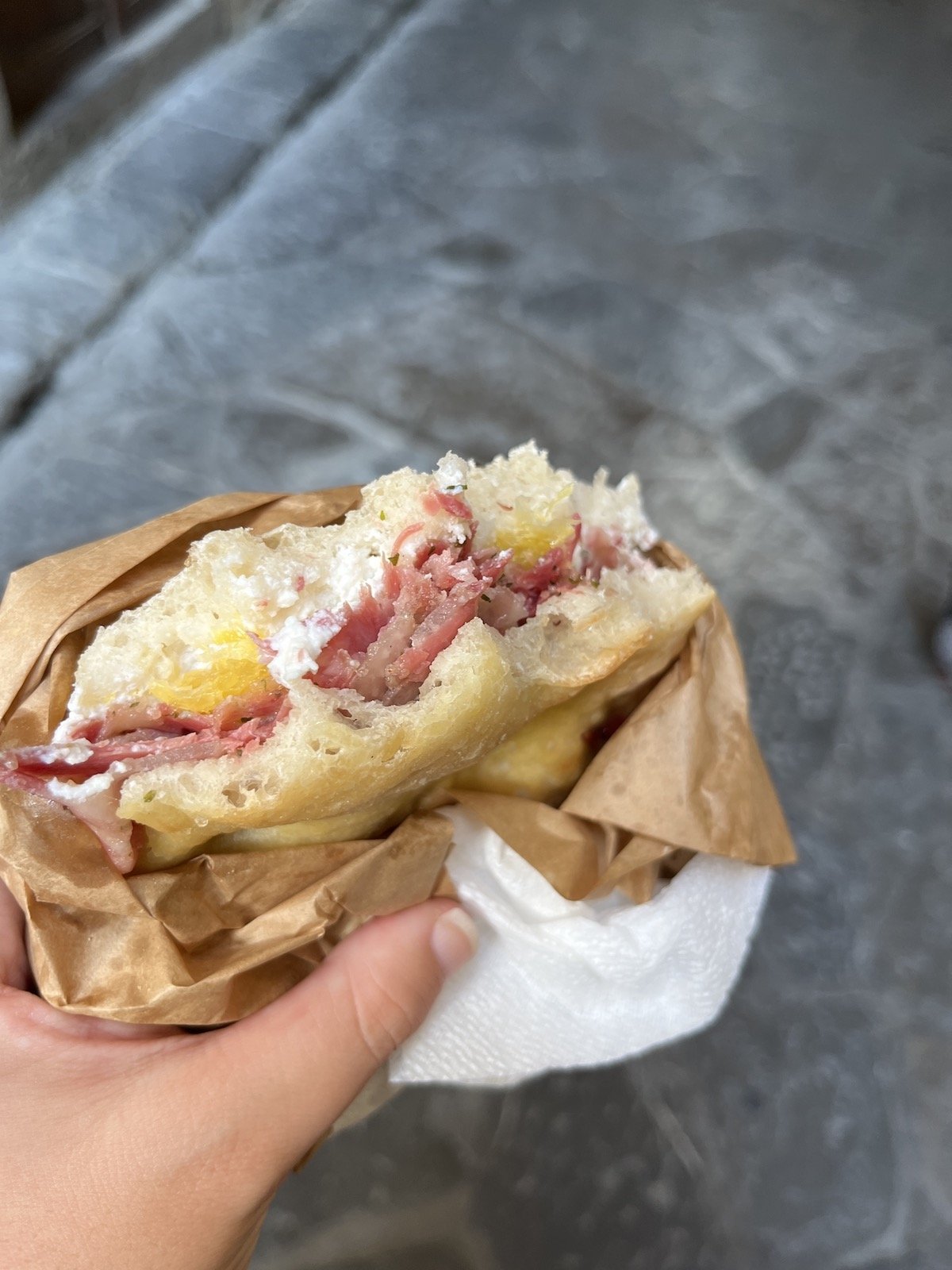

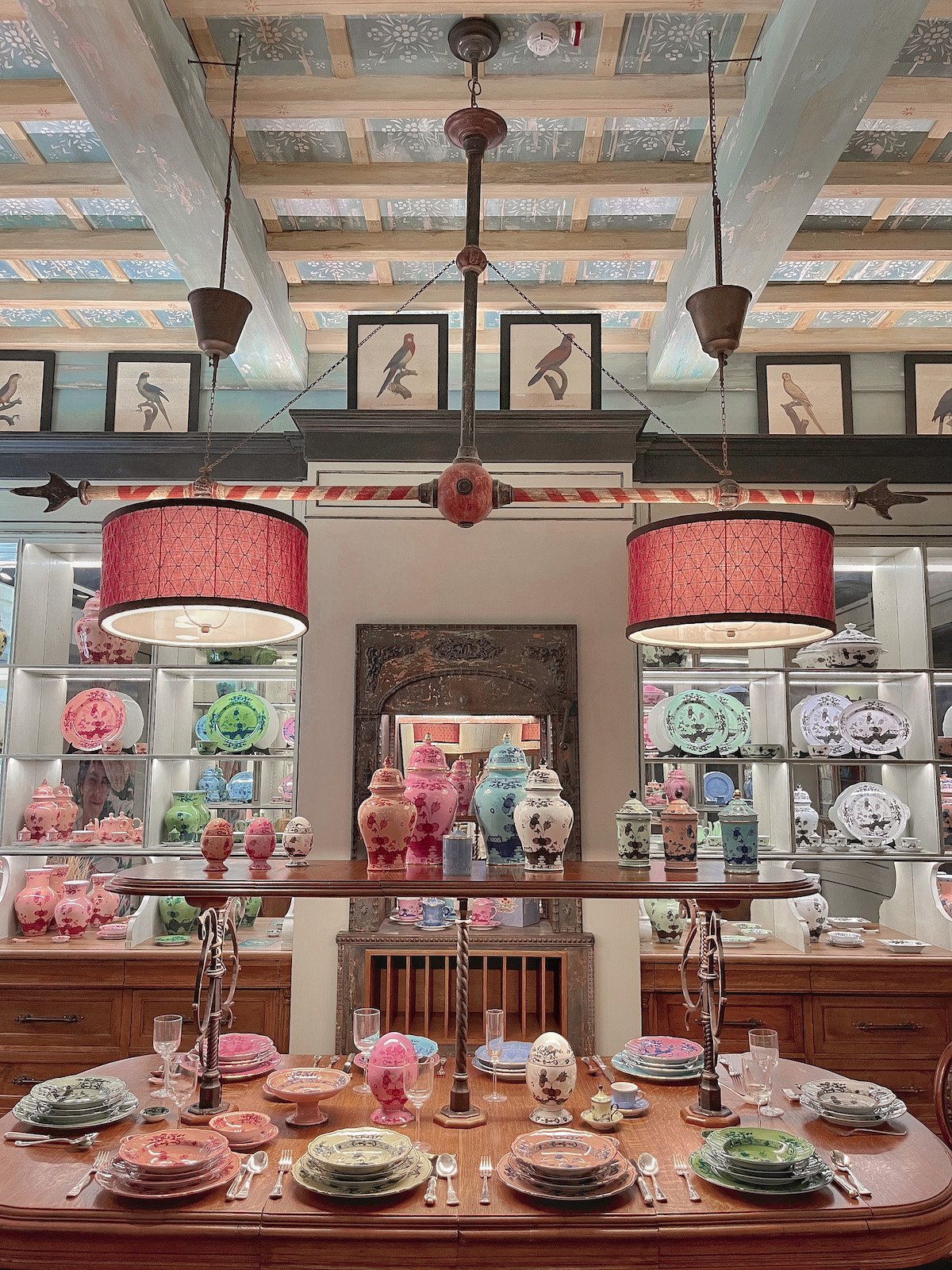
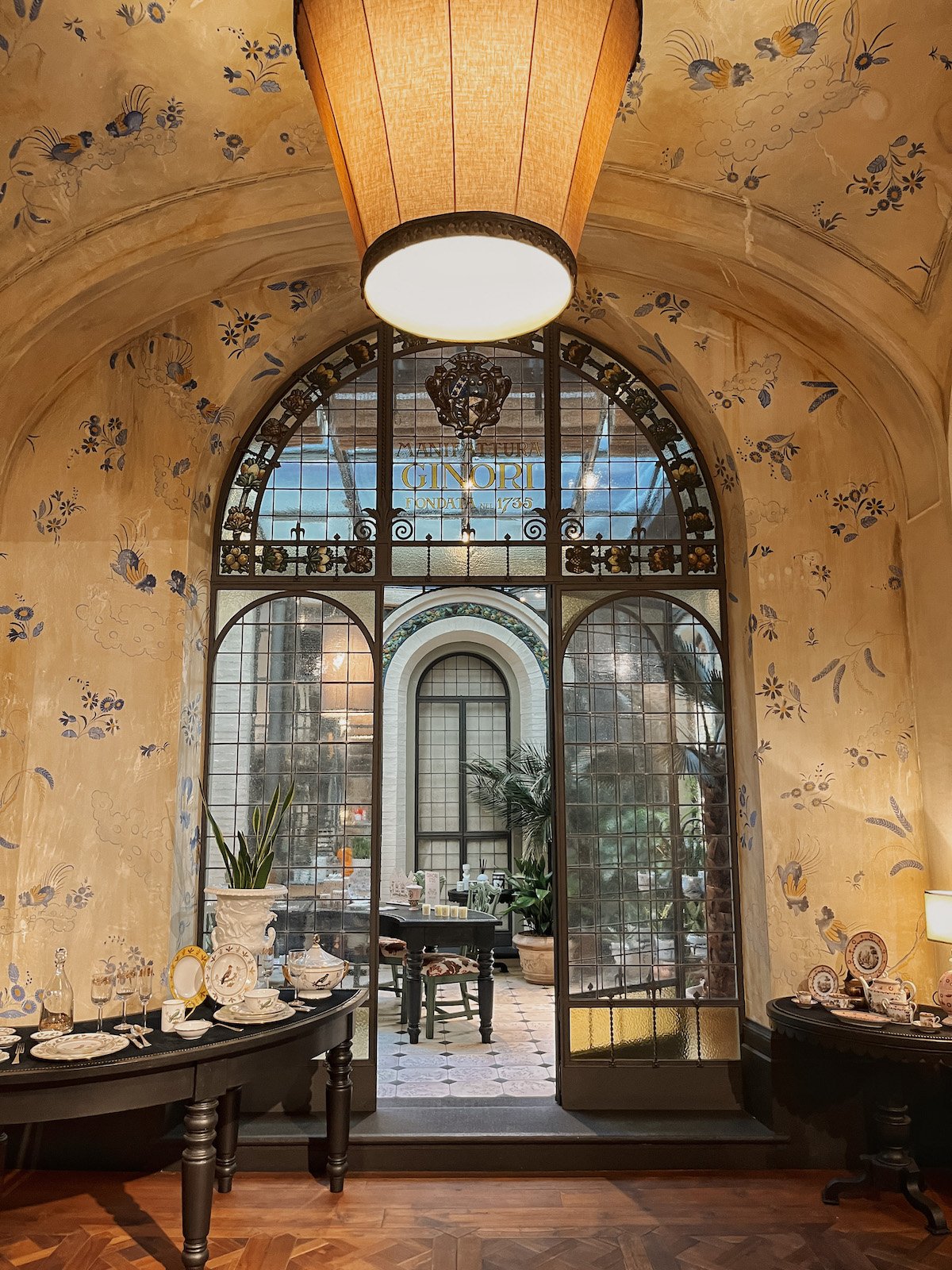


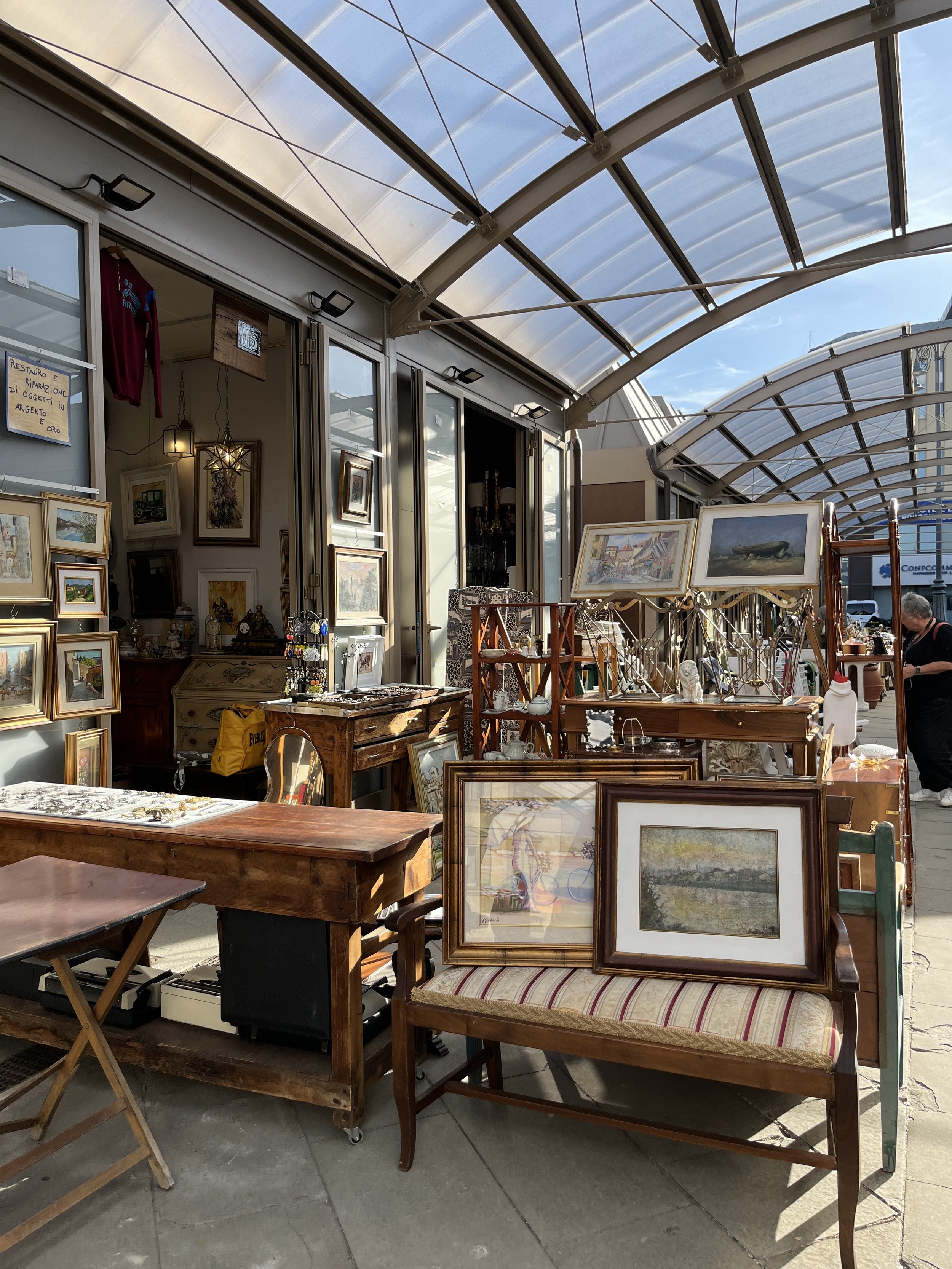
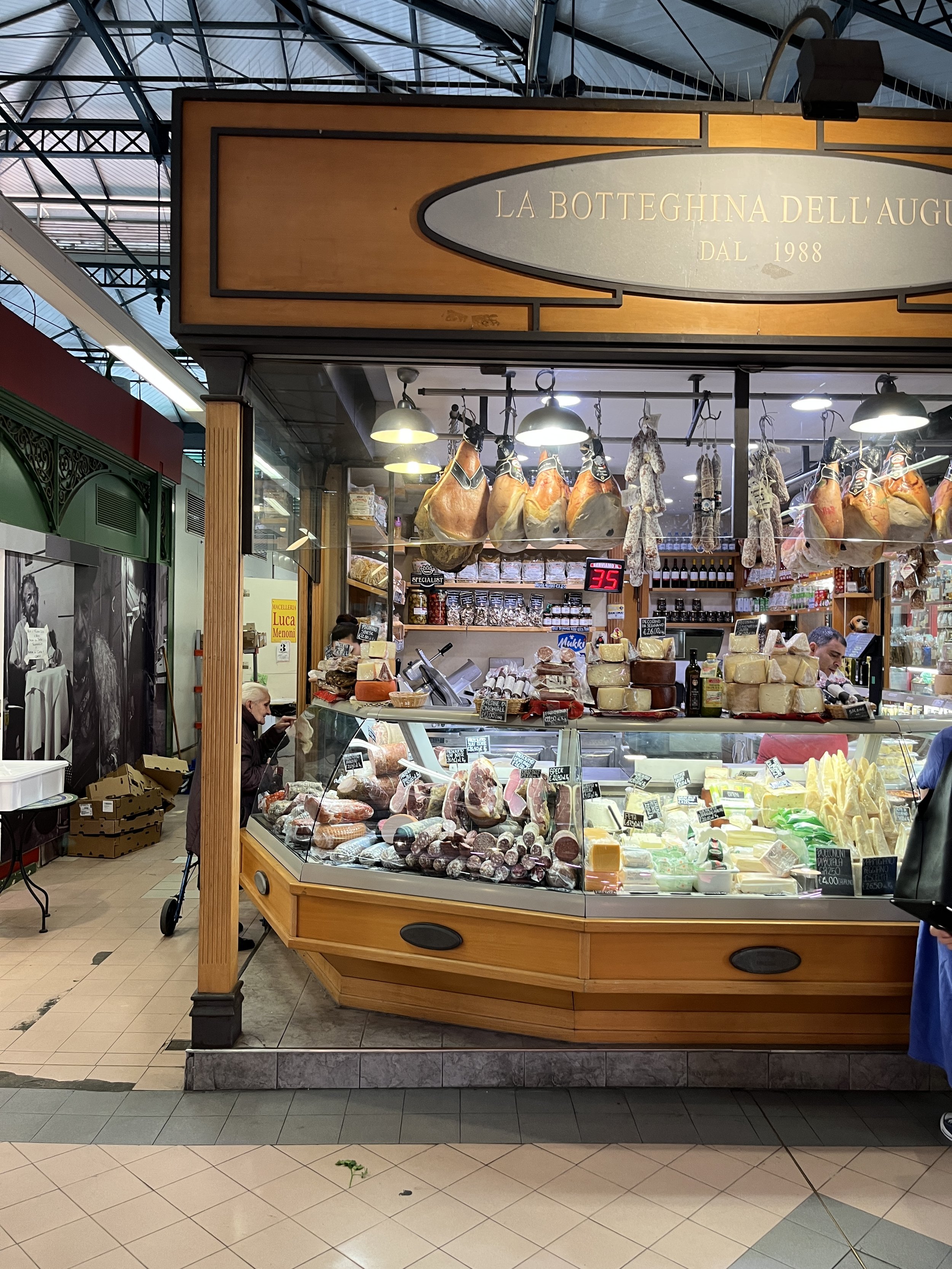

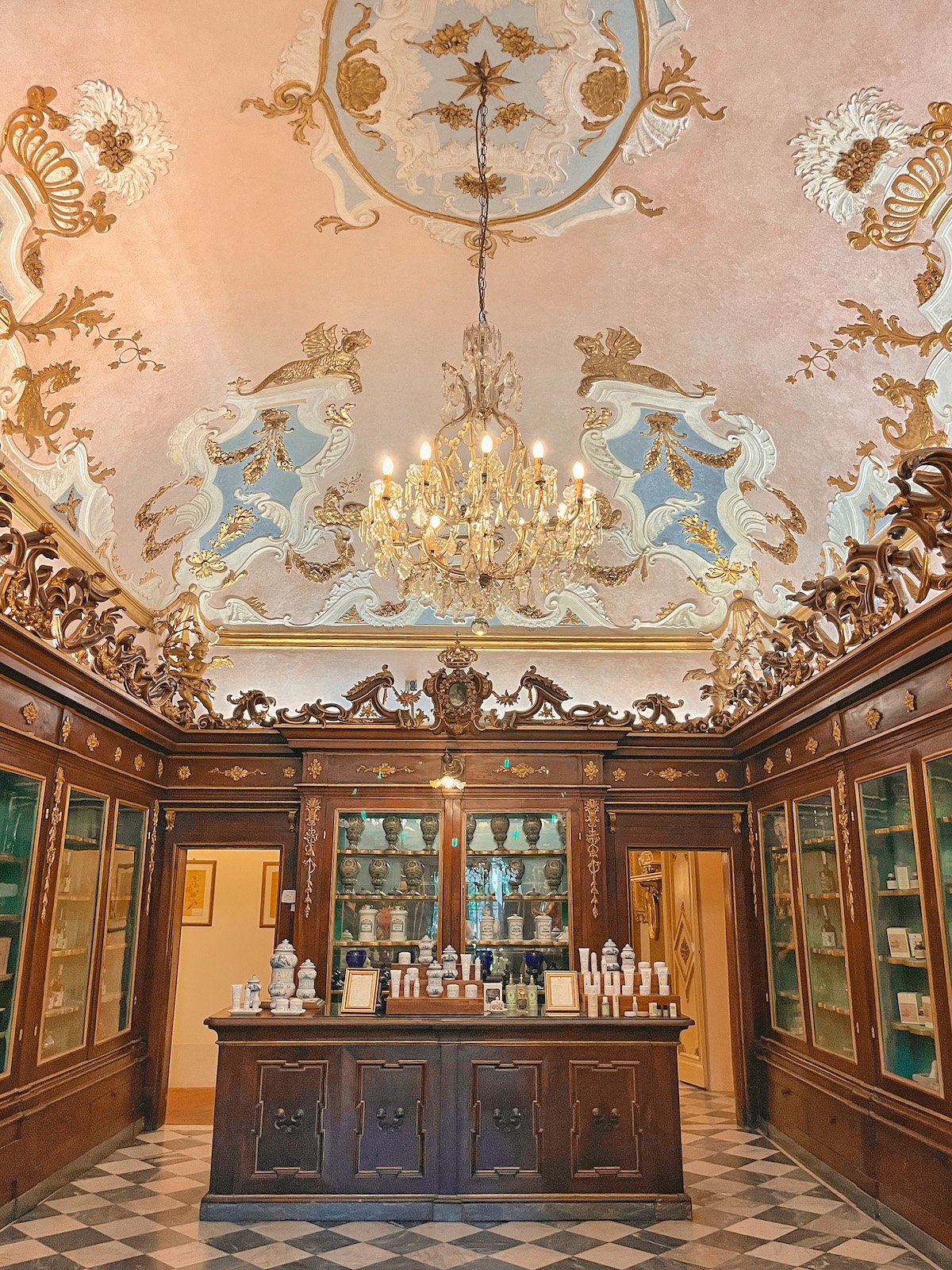

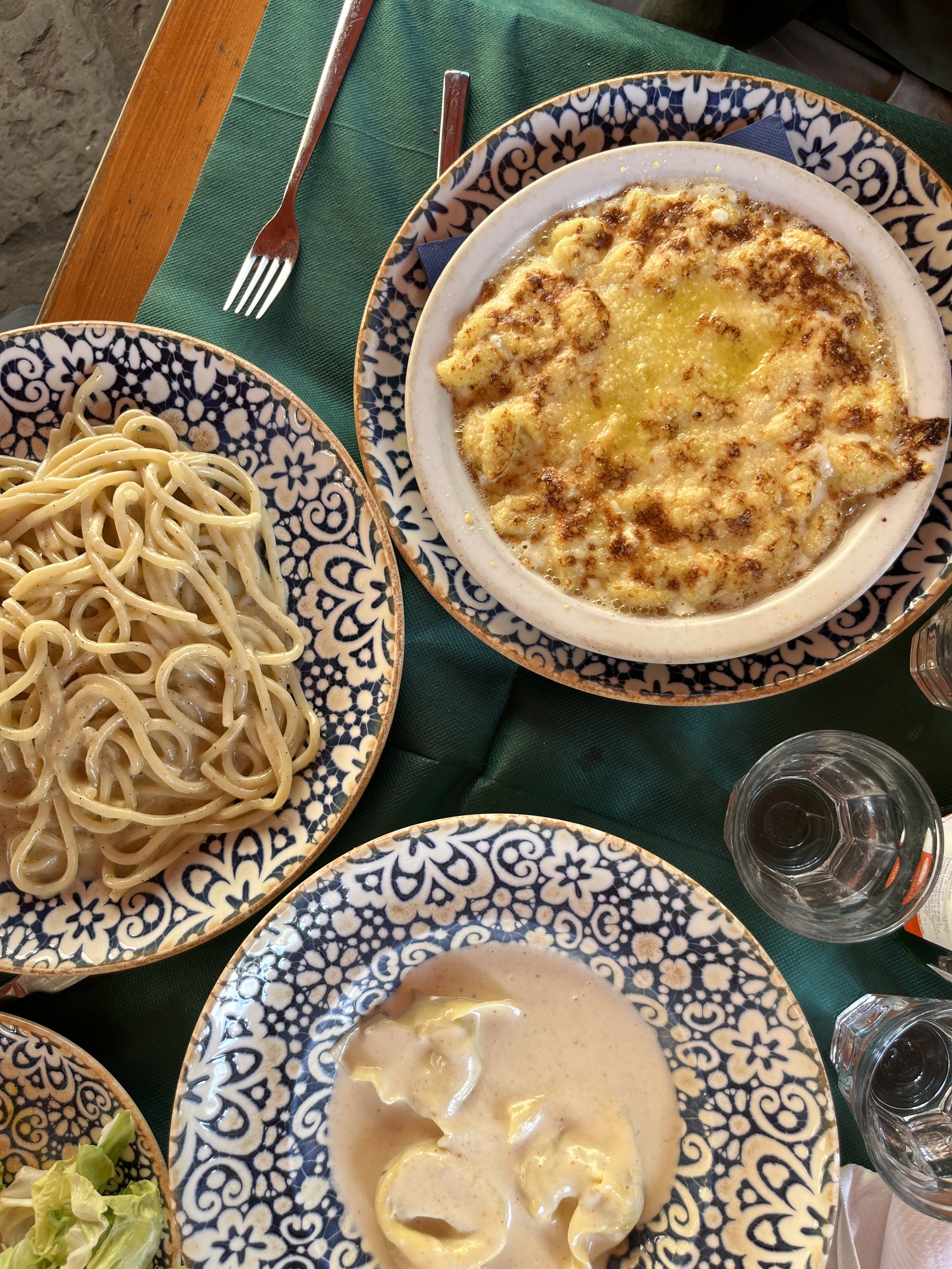

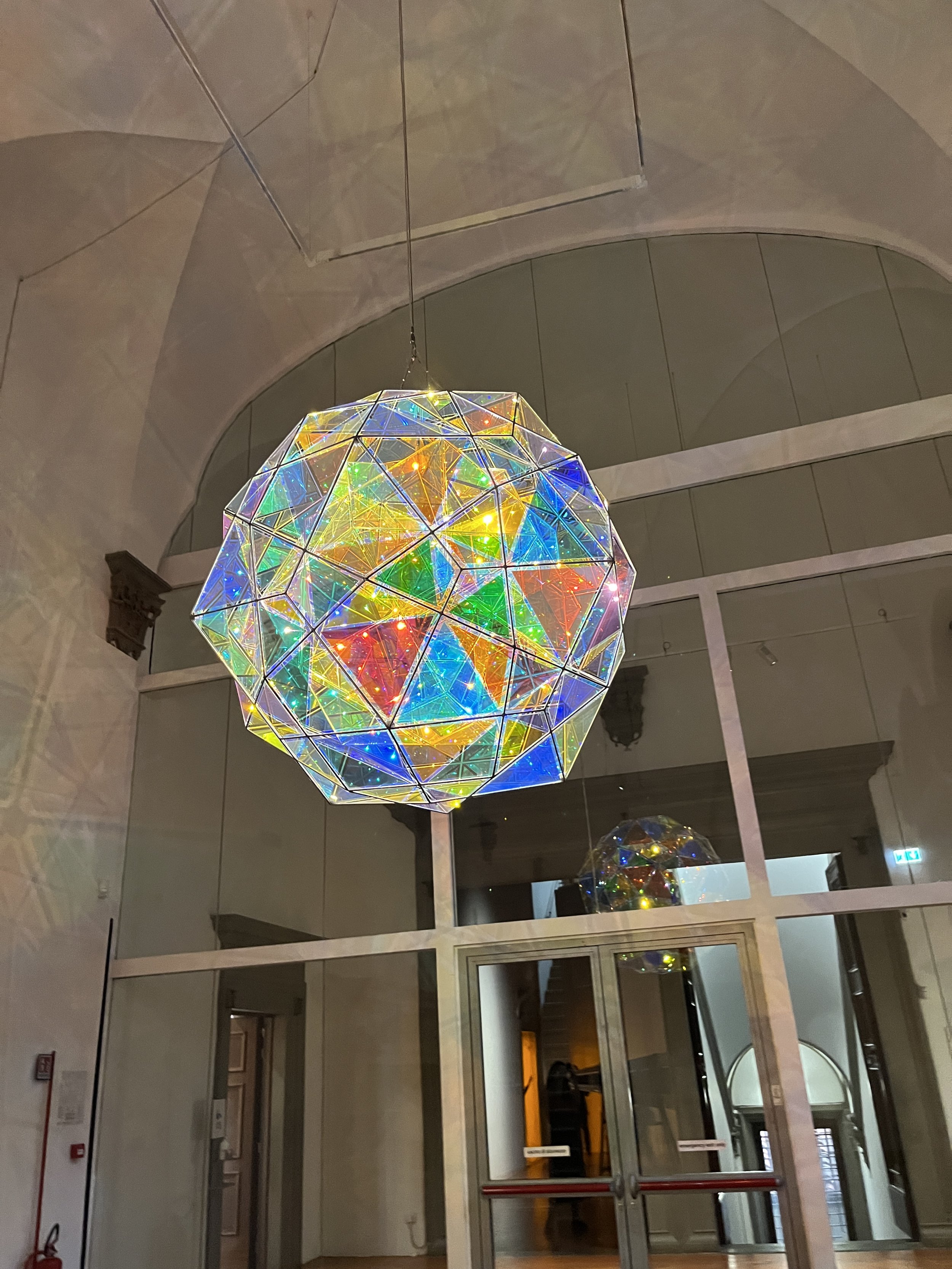
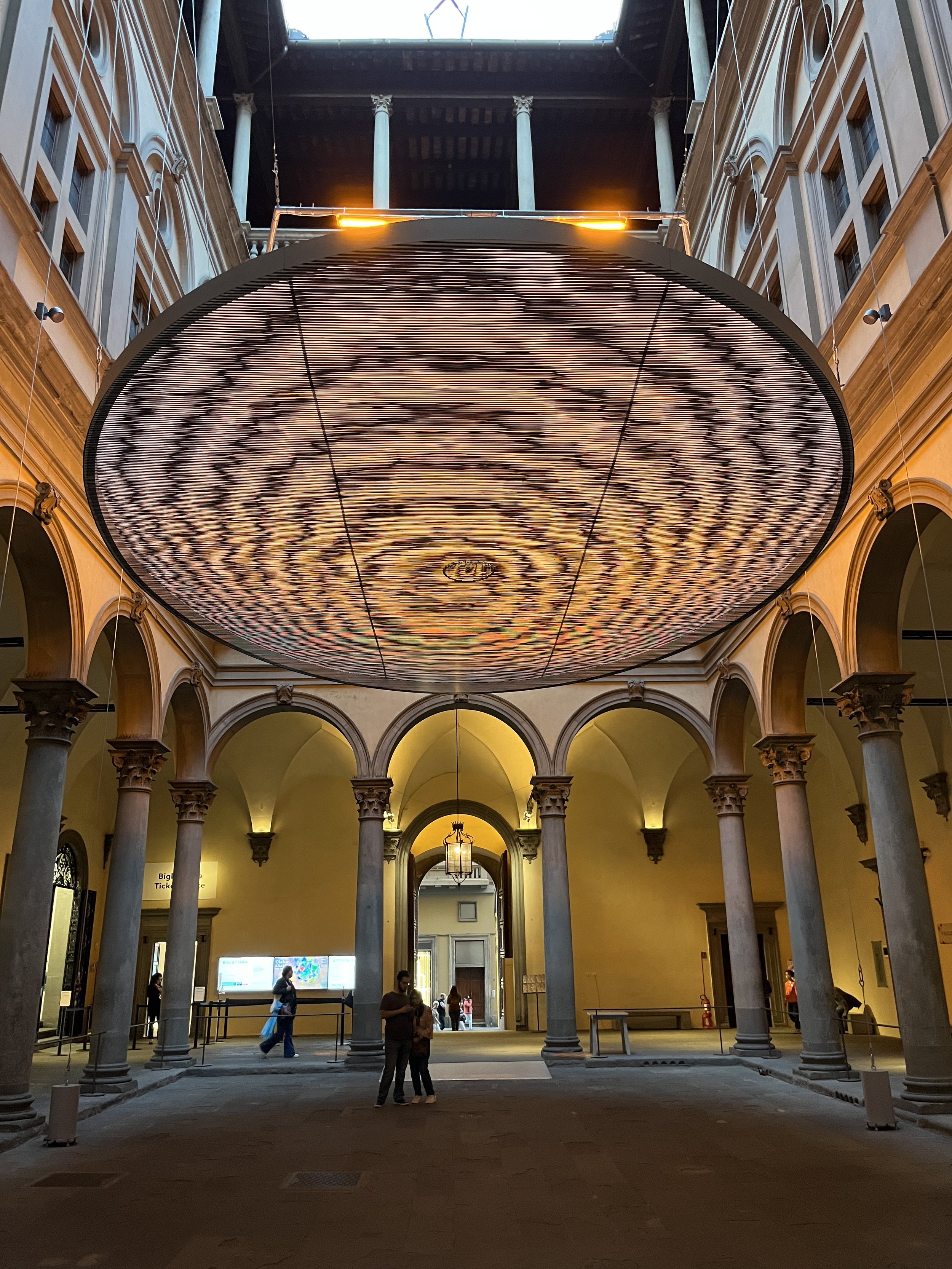

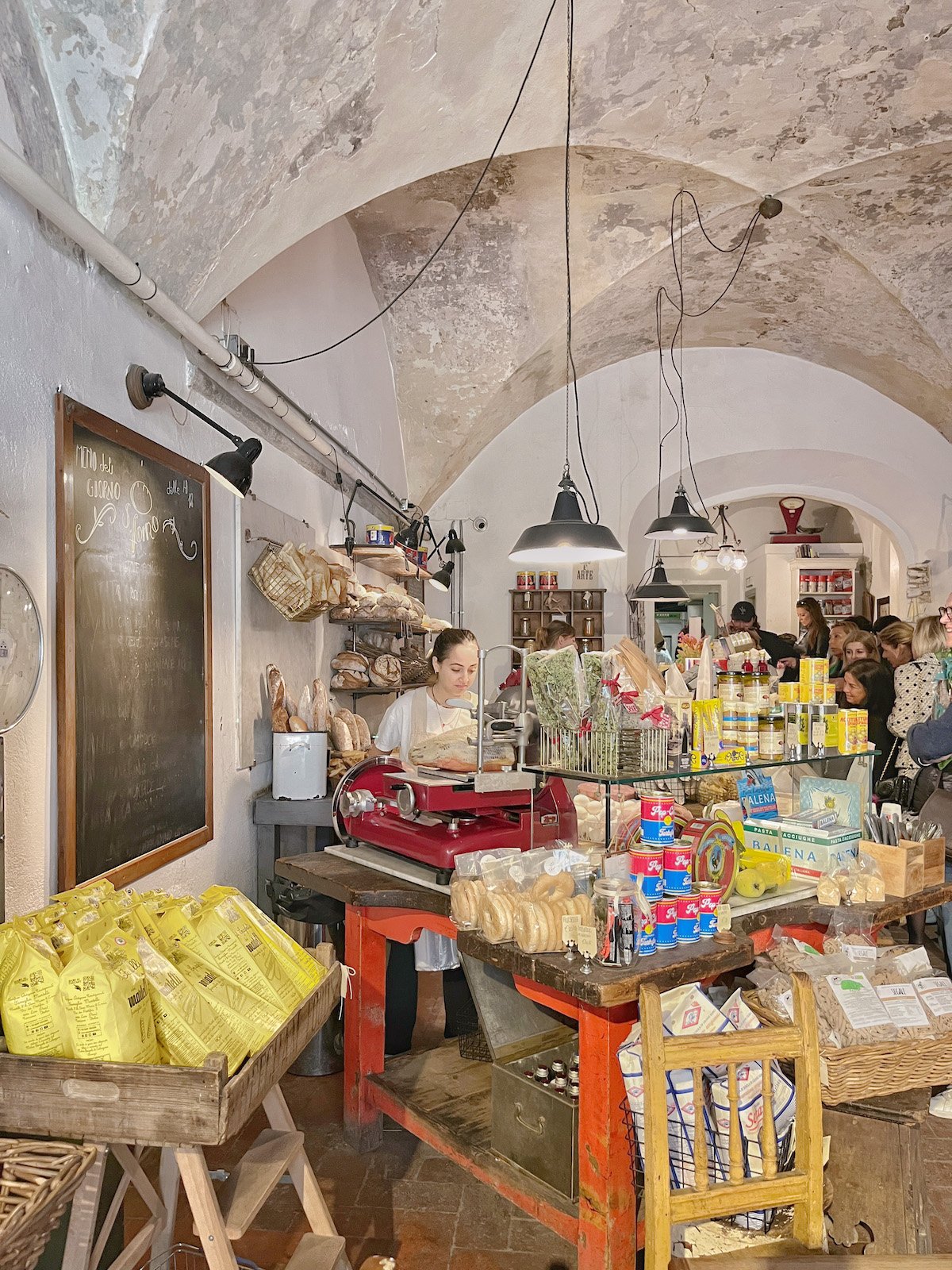
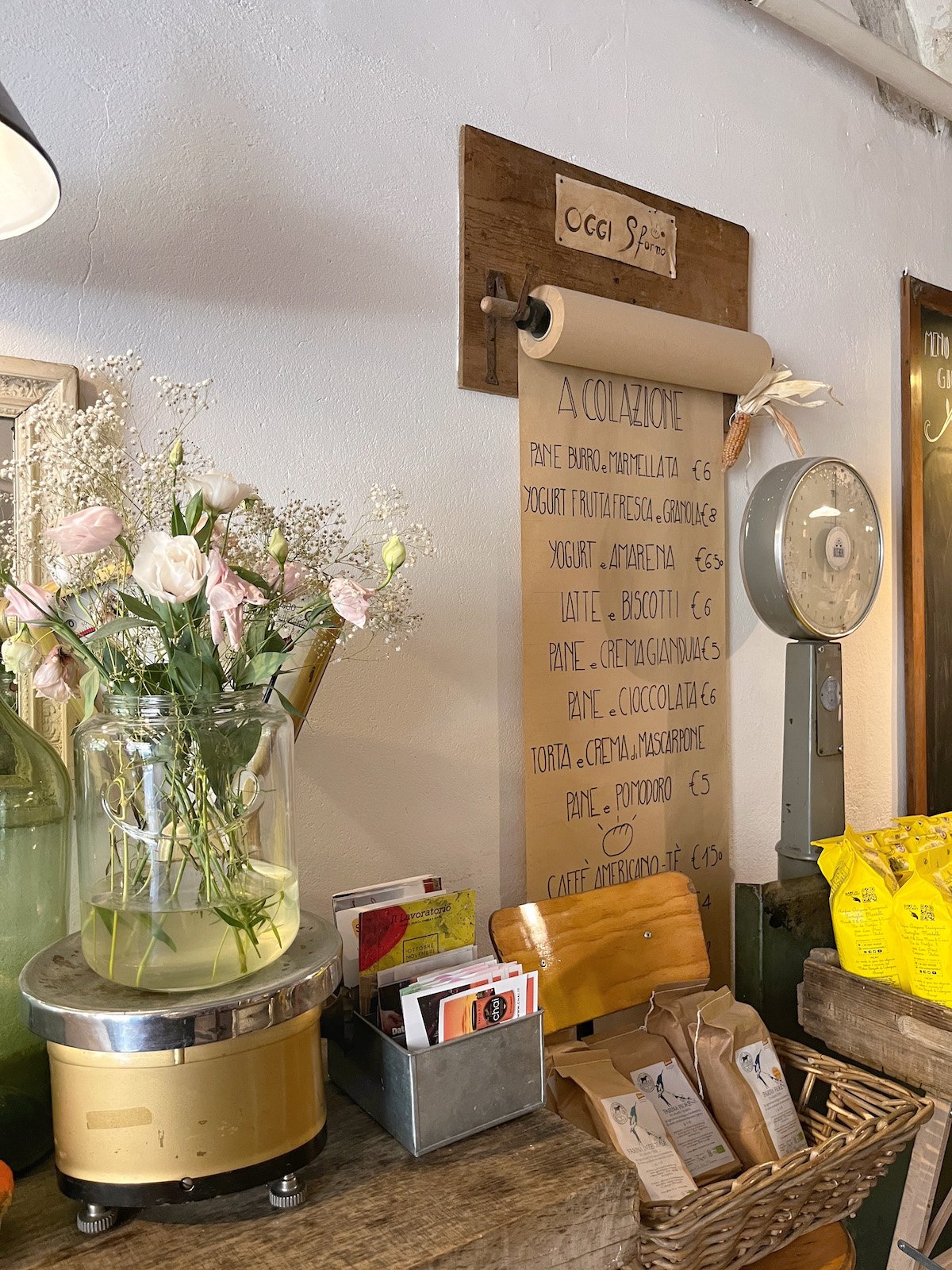

Florence is one of the most incredible cities in the world. It’s steeped in history and is almost otherworldly in its beauty. There is so much to do in Florence, especially in regards to art history. But how can you distill it all down to one day? Here’s my guide to spending 24 hours in Florence.